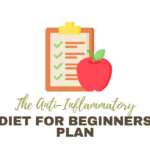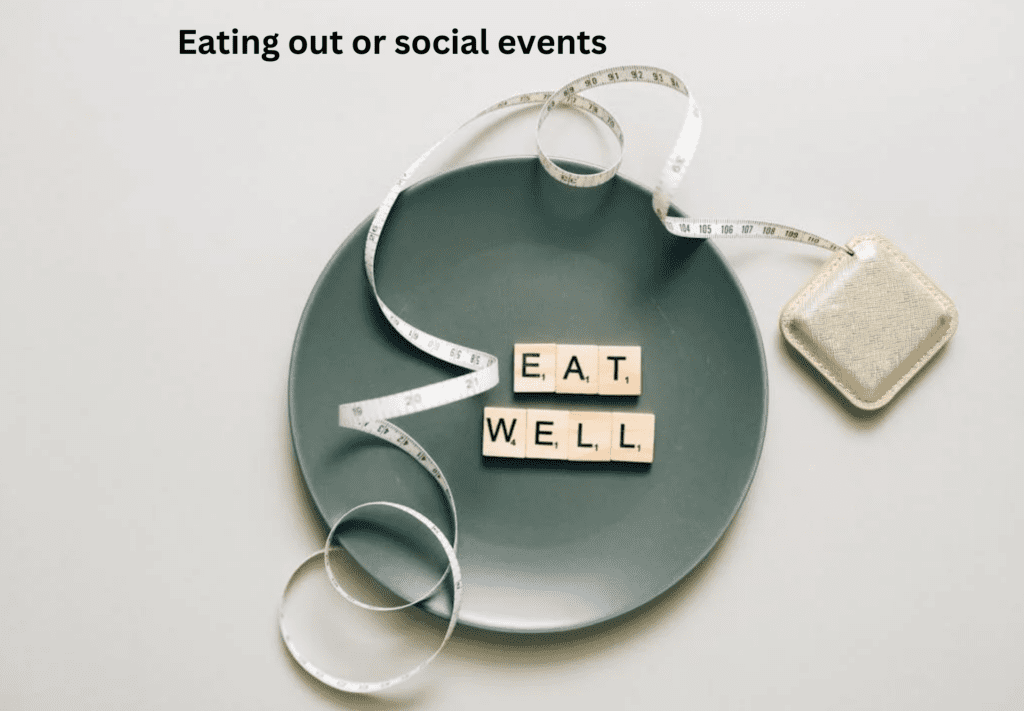

The Beginner's Guide to Crafting a Balanced Diet Plan


Arya Soleil
Creating a balanced diet plan doesn’t have to be a daunting task. While the overwhelming amount of nutrition advice and diet trends can make healthy eating seem complicated, the basics remain simple. Designing a sustainable and satisfying plan involves focusing on variety, consistency, and gradual progress. Once you start putting together your personalized diet plan, you’ll find it’s easier than it seems to create a lifestyle that supports good health and well-being.
What is a Balanced Diet?
A balanced diet is one that provides your body with the necessary nutrients it needs to function optimally. It includes macronutrients—carbohydrates, proteins, and fats—and ensures adequate micronutrient intake, such as vitamins and minerals. The goal is to promote overall health, prevent deficiencies, and reduce the risk of chronic diseases while meeting your energy needs.
Primary Ingredients of a Balanced Diet
Each component of a balanced diet plays a specific role in maintaining health:
- Carbohydrates: These are the body’s primary source of energy. Choose complex carbohydrates like whole grains, vegetables, and legumes, which provide sustained energy along with fiber, vitamins, and minerals. Limit refined carbohydrates and added sugars, as they lead to quick energy crashes.
- Proteins: Essential for tissue repair, muscle growth, and immune function, proteins should come from a mix of animal and plant-based sources like chicken, fish, tofu, beans, eggs, and low-fat dairy.
- Fats: Healthy fats support brain function, hormone production, and nutrient absorption. Prioritize unsaturated fats found in olive oil, avocados, nuts, seeds, and fatty fish while limiting saturated and trans fats from processed foods.
- Fruits and Vegetables: These are rich in fiber, vitamins, minerals, and antioxidants. Eating a variety of colorful options—both raw and cooked—ensures you get a broad range of nutrients. Aim for at least five portions per day.
- Dairy or Alternatives: For calcium and vitamin D, include dairy products or fortified alternatives like almond, soy, or oat milk, especially if you’re lactose intolerant or follow a plant-based diet.
- Hydration: Water is vital for every bodily function, from digestion to temperature regulation. Aim for at least 8–10 glasses daily. If plain water feels boring, try herbal teas or infused water to keep things interesting.
Steps to Design Your Balanced Diet Plan
Know Your Nutritional Needs
Individual nutritional needs vary based on factors like age, gender, activity level, and health goals. Tools like the USDA’s MyPlate or guidance from a registered dietitian can help determine your requirements.Plan Your Meals
Structure your day around three main meals and one or two snacks. Include a balance of carbohydrates, proteins, and healthy fats in each meal. Snacks should complement your meals, providing sustained energy throughout the day.Embrace Variety
Mix up your food choices to ensure a wide range of nutrients. Rotate protein sources, experiment with different grains, and try new fruits and vegetables regularly.Limit Processed Foods
Minimize ultra-processed foods high in salt, sugar, and unhealthy fats. Opt for whole, minimally processed options to maximize nutrient intake.Practice Mindful Eating
Pay attention to your body’s hunger and fullness cues. Avoid distractions like screens during meals, and savor your food to promote mindful eating habits.
Sample Balanced Diet for One Day
- Breakfast: Whole-grain toast topped with mashed avocado and a fried egg, paired with fresh berries and a cup of green tea.
- Snack: Greek yogurt drizzled with honey and sprinkled with sliced almonds.
- Lunch: Grilled chicken salad with mixed greens, cherry tomatoes, cucumber, and olive oil vinaigrette, accompanied by a slice of whole-grain bread.
- Afternoon Snack: A handful of nuts and a piece of fruit like an apple or orange.
- Dinner: Grilled salmon served with quinoa and steamed broccoli, followed by a small piece of dark chocolate.
- Hydration: Drink water consistently throughout the day, aiming for 8–10 glasses.
Overcoming Common Challenges
Chaotic Schedules
When life gets hectic, meal prep can save the day. Set aside time on weekends to cook in bulk, portion meals, and store them for the week. Easy options like overnight oats, salads in jars, and pre-cooked proteins make healthy eating convenient.Managing Cravings
Cravings are natural, and occasional indulgence is fine. The key is moderation. Satisfy cravings with healthier alternatives, such as air-popped popcorn instead of chips or a few squares of dark chocolate instead of a candy bar.Eating Out or Social Events
Dining out doesn’t have to derail your diet. Review menus in advance to choose healthier options, ask for dressings on the side, and swap fries for a salad. At social events, focus on portion control and balance indulgent foods with smarter choices.

Stay the Course
Patience is essential when embarking on a dietary change. While instant results can be tempting, focus on the small wins that signify progress: increased energy, improved digestion, glowing skin, or better mood. These victories remind you why you began the journey in the first place and reinforce the importance of long-term consistency. Celebrating these milestones builds the motivation needed to sustain your efforts.
Making Your Diet Plan
Every individual is unique, and so should be their diet. A personalized plan ensures that it caters to your preferences, needs, and lifestyle. Here’s how you can create a diet plan tailored just for you:
Cultural Foods: Incorporate dishes and ingredients from your cultural background. For instance, Indian cuisine can feature lentils, rice, and turmeric-rich curries, while Mediterranean meals might include hummus, olives, and whole-grain pita. Cultural foods often provide wholesome, nutrient-dense options.
Dietary Restrictions: If you have specific dietary requirements, adapt accordingly. Vegetarians can rely on plant-based proteins like tofu or lentils, while those with gluten intolerance can include grains such as quinoa or buckwheat.
Affordable Options: Healthy eating doesn’t have to be expensive. Choose seasonal fresh produce, frozen fruits and vegetables, and pantry staples like beans, eggs, and oats. These ingredients are budget-friendly, versatile, and nutritious.
By focusing on these elements, you can create a plan that not only nourishes your body but also satisfies your palate. It’s not just about eating “healthy” food but cultivating a lifestyle that supports your overall well-being. Remember, progress is made step by step, so take your time and enjoy the process. The journey itself is a rewarding part of the experience.
FAQs
Q1: How can I tell if my diet is well-balanced?
A well-balanced diet includes a mix of macronutrients (carbohydrates, proteins, and fats) and micronutrients (vitamins and minerals). Diversify your meals with whole grains, lean proteins, healthy fats, and plenty of fruits and vegetables. If you’re unsure about your intake, consider consulting a dietitian or using a nutrition tracker to monitor your consumption.
Q2: Do I need to count calories to maintain a healthy diet?
No, calorie counting isn’t essential for everyone. Focus on portion control and nutrient-dense foods. However, if you’re working toward specific health or fitness goals, tracking calories temporarily can help you better understand your eating habits and make informed adjustments.
Q3: Can I still eat my favorite foods and follow a balanced diet?
Absolutely! A balanced diet allows room for your favorite treats. The key is moderation and portion control. Indulgent foods can be enjoyed occasionally, balanced out by a diet rich in whole, nutritious options.
Q4: How can I follow a balanced diet on a budget?
Eating healthy doesn’t have to break the bank. Opt for seasonal produce, frozen fruits and vegetables, and pantry staples like beans, lentils, and oats. These are affordable, versatile, and nutrient-rich. Meal planning and bulk cooking can further reduce costs and minimize food waste.
Q5: What if I don’t like certain “healthy” foods?
Healthy eating is flexible and adaptable. If you dislike certain foods, try different preparation methods or swap them out for alternatives. For example, if spinach isn’t your favorite, experiment with kale or arugula. Find what works for you and enjoy the process of discovery.
With these steps and insights, you can create a diet plan that aligns with your unique needs and preferences. Embrace the journey, and remember that small, consistent changes lead to lasting results. Happy eating!
Recommended Reads

- December 29, 2024
Check out 7 truths and myths about diet
Have you ever heard of some diet myths that...


- December 29, 2024
Is fasting really a good option? Check out the precautions of this eating style
Living in a society that is based on a...


- December 29, 2024
Start having healthy habits with these 7 benefits of a balanced diet!
If you want to live a quality life, you...


- December 29, 2024
Check out the list of 54 anti-inflammatory foods for your diet!
A balanced diet ensures all the nutrients possible for a routine...


- December 29, 2024
Find out how to cut back on sugar in your diet!
It’s very likely that at some point in your...


- December 29, 2024
What are the benefits of each vitamin in your body?
If your goal is to have a healthy routine and...

The Beginner's Guide to Crafting a Balanced Diet Plan

Creating a balanced diet plan doesn’t have to be a daunting task. While the overwhelming amount of nutrition advice and diet trends can make healthy eating seem complicated, the basics remain simple. Designing a sustainable and satisfying plan involves focusing on variety, consistency, and gradual progress. Once you start putting together your personalized diet plan, you’ll find it’s easier than it seems to create a lifestyle that supports good health and well-being.
What is a Balanced Diet?
A balanced diet is one that provides your body with the necessary nutrients it needs to function optimally. It includes macronutrients—carbohydrates, proteins, and fats—and ensures adequate micronutrient intake, such as vitamins and minerals. The goal is to promote overall health, prevent deficiencies, and reduce the risk of chronic diseases while meeting your energy needs.
Primary Ingredients of a Balanced Diet
Each component of a balanced diet plays a specific role in maintaining health:
- Carbohydrates: These are the body’s primary source of energy. Choose complex carbohydrates like whole grains, vegetables, and legumes, which provide sustained energy along with fiber, vitamins, and minerals. Limit refined carbohydrates and added sugars, as they lead to quick energy crashes.
- Proteins: Essential for tissue repair, muscle growth, and immune function, proteins should come from a mix of animal and plant-based sources like chicken, fish, tofu, beans, eggs, and low-fat dairy.
- Fats: Healthy fats support brain function, hormone production, and nutrient absorption. Prioritize unsaturated fats found in olive oil, avocados, nuts, seeds, and fatty fish while limiting saturated and trans fats from processed foods.
- Fruits and Vegetables: These are rich in fiber, vitamins, minerals, and antioxidants. Eating a variety of colorful options—both raw and cooked—ensures you get a broad range of nutrients. Aim for at least five portions per day.
- Dairy or Alternatives: For calcium and vitamin D, include dairy products or fortified alternatives like almond, soy, or oat milk, especially if you’re lactose intolerant or follow a plant-based diet.
- Hydration: Water is vital for every bodily function, from digestion to temperature regulation. Aim for at least 8–10 glasses daily. If plain water feels boring, try herbal teas or infused water to keep things interesting.
Steps to Design Your Balanced Diet Plan
Know Your Nutritional Needs
Individual nutritional needs vary based on factors like age, gender, activity level, and health goals. Tools like the USDA’s MyPlate or guidance from a registered dietitian can help determine your requirements.Plan Your Meals
Structure your day around three main meals and one or two snacks. Include a balance of carbohydrates, proteins, and healthy fats in each meal. Snacks should complement your meals, providing sustained energy throughout the day.Embrace Variety
Mix up your food choices to ensure a wide range of nutrients. Rotate protein sources, experiment with different grains, and try new fruits and vegetables regularly.Limit Processed Foods
Minimize ultra-processed foods high in salt, sugar, and unhealthy fats. Opt for whole, minimally processed options to maximize nutrient intake.Practice Mindful Eating
Pay attention to your body’s hunger and fullness cues. Avoid distractions like screens during meals, and savor your food to promote mindful eating habits.
Sample Balanced Diet for One Day
- Breakfast: Whole-grain toast topped with mashed avocado and a fried egg, paired with fresh berries and a cup of green tea.
- Snack: Greek yogurt drizzled with honey and sprinkled with sliced almonds.
- Lunch: Grilled chicken salad with mixed greens, cherry tomatoes, cucumber, and olive oil vinaigrette, accompanied by a slice of whole-grain bread.
- Afternoon Snack: A handful of nuts and a piece of fruit like an apple or orange.
- Dinner: Grilled salmon served with quinoa and steamed broccoli, followed by a small piece of dark chocolate.
- Hydration: Drink water consistently throughout the day, aiming for 8–10 glasses.
Overcoming Common Challenges
Chaotic Schedules
When life gets hectic, meal prep can save the day. Set aside time on weekends to cook in bulk, portion meals, and store them for the week. Easy options like overnight oats, salads in jars, and pre-cooked proteins make healthy eating convenient.Managing Cravings
Cravings are natural, and occasional indulgence is fine. The key is moderation. Satisfy cravings with healthier alternatives, such as air-popped popcorn instead of chips or a few squares of dark chocolate instead of a candy bar.Eating Out or Social Events
Dining out doesn’t have to derail your diet. Review menus in advance to choose healthier options, ask for dressings on the side, and swap fries for a salad. At social events, focus on portion control and balance indulgent foods with smarter choices.

Stay the Course
Patience is essential when embarking on a dietary change. While instant results can be tempting, focus on the small wins that signify progress: increased energy, improved digestion, glowing skin, or better mood. These victories remind you why you began the journey in the first place and reinforce the importance of long-term consistency. Celebrating these milestones builds the motivation needed to sustain your efforts.
Making Your Diet Plan
Every individual is unique, and so should be their diet. A personalized plan ensures that it caters to your preferences, needs, and lifestyle. Here’s how you can create a diet plan tailored just for you:
Cultural Foods: Incorporate dishes and ingredients from your cultural background. For instance, Indian cuisine can feature lentils, rice, and turmeric-rich curries, while Mediterranean meals might include hummus, olives, and whole-grain pita. Cultural foods often provide wholesome, nutrient-dense options.
Dietary Restrictions: If you have specific dietary requirements, adapt accordingly. Vegetarians can rely on plant-based proteins like tofu or lentils, while those with gluten intolerance can include grains such as quinoa or buckwheat.
Affordable Options: Healthy eating doesn’t have to be expensive. Choose seasonal fresh produce, frozen fruits and vegetables, and pantry staples like beans, eggs, and oats. These ingredients are budget-friendly, versatile, and nutritious.
By focusing on these elements, you can create a plan that not only nourishes your body but also satisfies your palate. It’s not just about eating “healthy” food but cultivating a lifestyle that supports your overall well-being. Remember, progress is made step by step, so take your time and enjoy the process. The journey itself is a rewarding part of the experience.
FAQs
Q1: How can I tell if my diet is well-balanced?
A well-balanced diet includes a mix of macronutrients (carbohydrates, proteins, and fats) and micronutrients (vitamins and minerals). Diversify your meals with whole grains, lean proteins, healthy fats, and plenty of fruits and vegetables. If you’re unsure about your intake, consider consulting a dietitian or using a nutrition tracker to monitor your consumption.
Q2: Do I need to count calories to maintain a healthy diet?
No, calorie counting isn’t essential for everyone. Focus on portion control and nutrient-dense foods. However, if you’re working toward specific health or fitness goals, tracking calories temporarily can help you better understand your eating habits and make informed adjustments.
Q3: Can I still eat my favorite foods and follow a balanced diet?
Absolutely! A balanced diet allows room for your favorite treats. The key is moderation and portion control. Indulgent foods can be enjoyed occasionally, balanced out by a diet rich in whole, nutritious options.
Q4: How can I follow a balanced diet on a budget?
Eating healthy doesn’t have to break the bank. Opt for seasonal produce, frozen fruits and vegetables, and pantry staples like beans, lentils, and oats. These are affordable, versatile, and nutrient-rich. Meal planning and bulk cooking can further reduce costs and minimize food waste.
Q5: What if I don’t like certain “healthy” foods?
Healthy eating is flexible and adaptable. If you dislike certain foods, try different preparation methods or swap them out for alternatives. For example, if spinach isn’t your favorite, experiment with kale or arugula. Find what works for you and enjoy the process of discovery.
With these steps and insights, you can create a diet plan that aligns with your unique needs and preferences. Embrace the journey, and remember that small, consistent changes lead to lasting results. Happy eating!

Arya Soleil
More Topics


The Incredible Health Benefits of Cucumbers: Why This Hydrating Superfood Deserves More Attention

Is Eating Raw Food Really “Too Extreme”? Rethinking Health Before It’s Too Late

The Truth About Bacon: Is It Really Bad for You?

Why Grass-Fed Butter is Good for You

Top 4 Vitamins for Brain Health: Nourish Your Mind Naturally
Recommended Reads

- December 29, 2024
Check out 7 truths and myths about diet
Have you ever heard of some diet myths that...


- December 29, 2024
Is fasting really a good option? Check out the precautions of this eating style
Living in a society that is based on a...


- December 29, 2024
Start having healthy habits with these 7 benefits of a balanced diet!
If you want to live a quality life, you...


- December 29, 2024
Check out the list of 54 anti-inflammatory foods for your diet!
A balanced diet ensures all the nutrients possible for a routine...


- December 29, 2024
Find out how to cut back on sugar in your diet!
It’s very likely that at some point in your...


- December 29, 2024
What are the benefits of each vitamin in your body?
If your goal is to have a healthy routine and...

